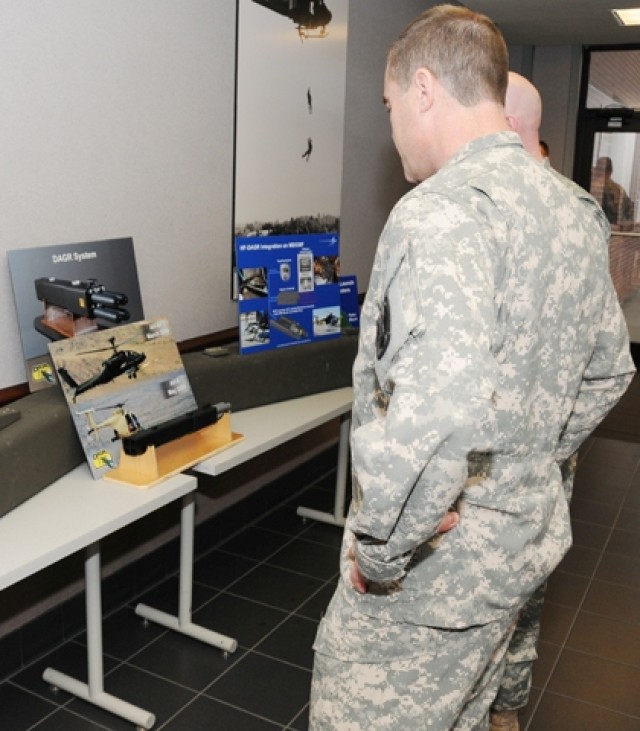FORT RUCKER Ala. -- Gunnery Soldiers, instructors and other related personnel from different installations and allied countries discussed issues facing their craft during the Gunnery Working Group conference here, Feb. 1-5.
"The number one motivation is collaboration. The goal was to get key people talking about what we've learned and how we incorporate (that) into training," said Chief Warrant Officer Steve Kilgore, Directorate of Training and Doctrine gunnery branch chief.
Brig. Gen. Kelly J. Thomas, U.S. Army Aviation Center of Excellence and Fort Rucker deputy commanding general, also echoed the importance of the conference during opening statements Feb. 2. While many weapons systems were developed from master gunners' opinions and intelligence, Thomas said more work needs to be done.
"Don't think for a minute we have all the answers," he said.
Representatives from different U.S. Armed Forces branches and close allies contributed to the conference. Kilgore said his staff made a concerted effort to include allies because they have gained valuable knowledge during the warfight.
"We are fighting a multi-national coalition fight. We work closely with a lot of countries," he said, noting the lessons shared will make the "coalition fight better in the long run."
Officials have organized the conference since 2003, but this year's group had a special task. DOTD staff members are in the process of updating the Army gunnery field manual, and Kilgore's staff solicited opinions and ideas to include in the book.
Kilgore said the biggest change in the manual will be in philosophy because the type of fighting U.S. forces face today has initiated a different approach. Kilgore said past gunners only had to worry about accuracy, but irregular warfare also demands quickness.
"If we don't respond quickly enough, the forces we support are at risk for a longer period of time," he said. "We have to develop a more stringent time standard."
Kilgore said changes in training schedules and objectives will reflect the new gunnery theories.
One of the highlights of the conference was a presentation on unmanned aircraft systems from Chief Warrant Officer Cory Anderson, a Soldier with TRADOC Capability Management-UAS. He discussed the weapons systems being developed for UAS, mentioning Hellfire systems will be used until at least fiscal year 2016.
Anderson also addressed integration of UAS systems into Combat Aviation Brigades. He said the first step included sending video feeds straight to AH-64D Apache Longbow cockpits. More capabilities will be added in the future, including allowing Apache pilots limited control of UAS platforms from their cockpits.
"This is the future of Army Aviation," he said, noting the Aviation community has been supporting the UAS program.
Kilgore asked UAS Soldiers to present material at the conference because the UAS program is still unfamiliar to many Soldiers. TRADOC staff members are also developing standards for UAS gunnery, he added.
The week-long conference accomplished many of the goals Kilgore set, he said.
"We were able to get the goals of the conference done through the efforts of a lot of people on Fort Rucker," he said.
(Public Affairs Specialist Jay Mann contributed information to this report)


Social Sharing